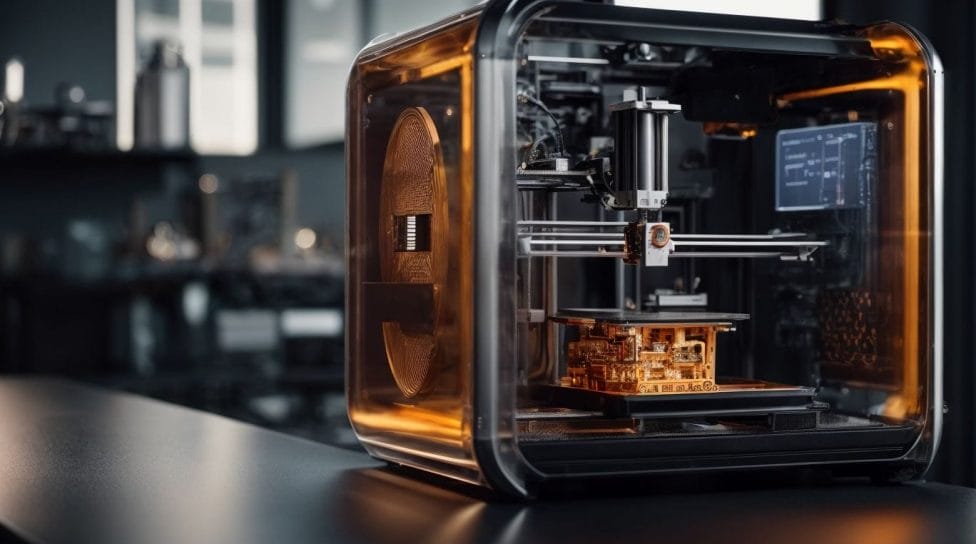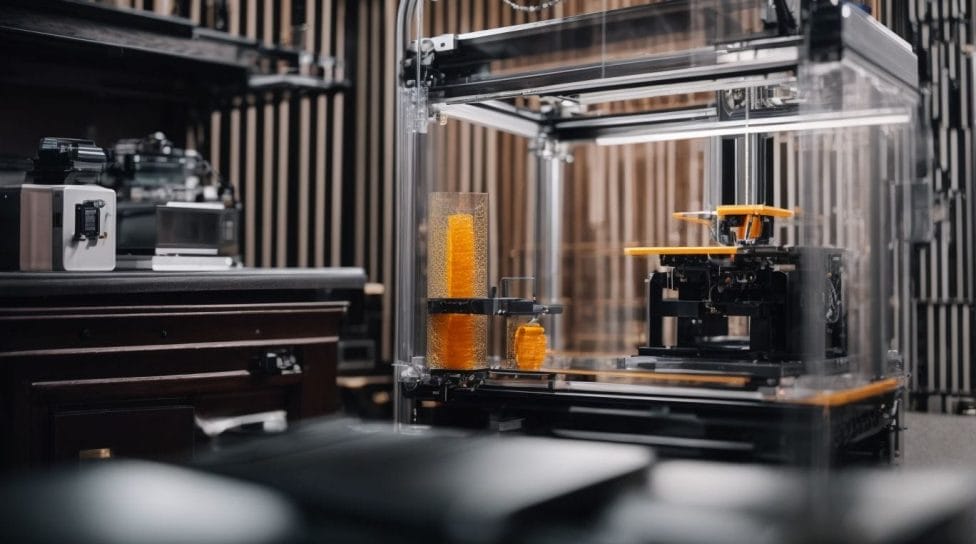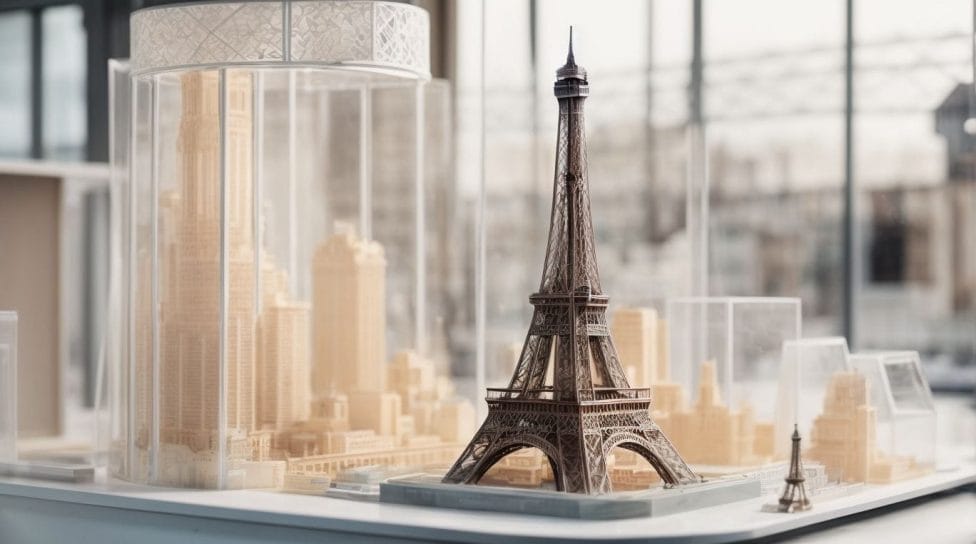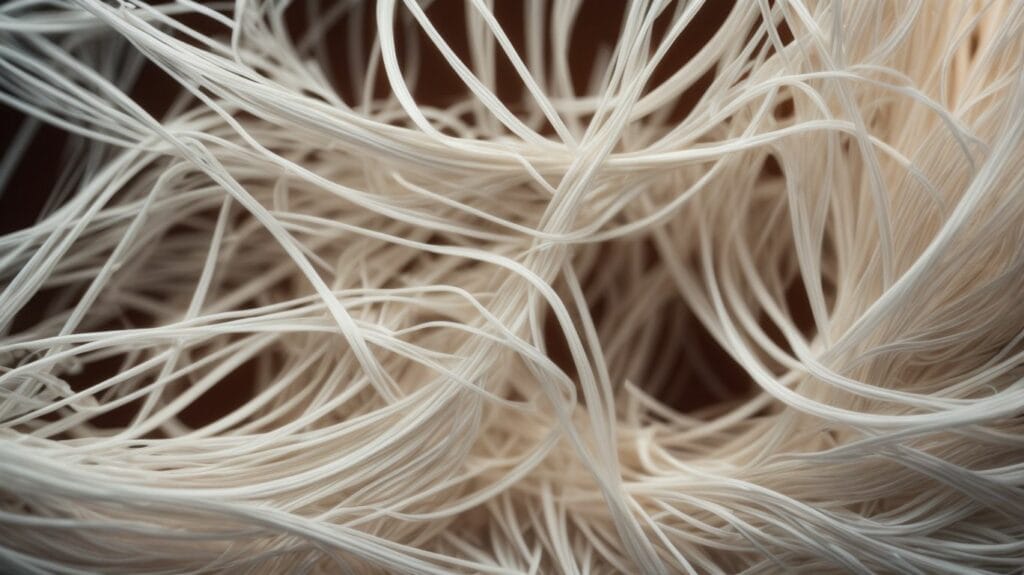The world of 3D printing has revolutionized the way we create and manufacture objects. But what exactly do 3D printers use to bring these creations to life? In this article, we will explore the main components and materials used in 3D printers, as well as how they work and what can be created with them.
Firstly, let’s take a look at the main components of a 3D printer. The key components include:
- Extruder: This is responsible for melting and extruding the printing material.
- Build Platform: It serves as the base where the object is printed and helps maintain stability during the printing process.
- Controller Board: This is the brain of the 3D printer, controlling the movements and operations of the machine.
- Power Supply: It provides the necessary electrical energy to the 3D printer.
- Filament: This is the material that is used for printing and comes in various types such as PLA, ABS, and more.
Next, let’s explore the different types of materials that can be used in 3D printers. Some commonly used materials include plastics, metals, ceramics, resins, and composites. Each material has its own unique properties and applications, making 3D printing a versatile manufacturing technology.
Now, how does a 3D printer actually work? The process typically involves three main steps: modeling, slicing, and printing. In the modeling phase, a digital design or model of the object is created using specialized software. This model is then sliced into thin layers, which the printer can understand. Finally, the printer builds the object layer by layer, following the instructions given by the sliced model.
Lastly, what can you create with a 3D printer? The possibilities are vast. 3D printers can be used to create prototypes and mockups for various industries, customized products tailored to individual needs, home decor and accessories, spare parts for appliances and machinery, as well as unique artwork and sculptures.
Key takeaways:
Key takeaways:
- Extruder: The extruder is one of the main components of a 3D printer, responsible for melting the filament and depositing it layer by layer to create the object.
- Filament: 3D printers use various types of materials, such as plastics, metals, ceramics, resins, and composites, in the form of filaments to create objects.
- Applications: With a 3D printer, you can create prototypes, customized products, home decor, spare parts, and even artwork and sculptures.
What Are the Main Components of a 3D Printer?

Photo Credits: Futureproof3D.Com by Frank Martin
Curious about the inner workings of a 3D printer? Let’s dive into the fascinating world of its components. From the extruder to the build platform, the controller board to the power supply, and not forgetting the essential filament – we’ll unravel the key elements that bring a 3D printer to life. Get ready to explore how these components work together to create the magic of 3D printing!
1. Extruder
The extruder is a vital component of a 3D printer, responsible for melting and depositing the filament material layer by layer to create the desired object. It consists of a nozzle that heats up and extrudes the filament, and a motor that feeds the filament into the nozzle. The extruder is controlled by the printer’s software, which determines the speed and temperature for optimal printing. The accuracy and consistency of the extruder are crucial for achieving high-quality prints. Fun fact: The extruder can reach temperatures of up to 500 degrees Celsius during the printing process.
2. Build Platform
Build Platform: A Crucial Component for 3D Printing
The build platform is a crucial component of a 3D printer that provides a stable surface for printing objects. It plays a vital role in the 3D printing process, ensuring that the printed objects adhere properly and come out perfectly.
Here is a step-by-step guide on how to use the build platform effectively:
- Prepare the build platform: Start by cleaning the build platform to ensure proper adhesion. This step is essential for successful 3D prints.
- Level the build platform: It is crucial to level the build platform to achieve optimum results. Make sure it is parallel to the printer’s nozzle, guaranteeing precise and accurate prints.
- Apply adhesive or printing surface: For added adhesion, you can apply adhesive or choose a printing surface like painter’s tape or a specialized sheet. This step further enhances the stability of the build platform.
- Import or design the object: Utilize 3D modeling software to import or design the object you want to print. This software allows you to personalize your creations effortlessly.
- Configure printer settings: Set the temperature and printing speed according to your requirements. Adjusting these settings precisely ensures the perfect printing environment for your object.
- Start the printing process: Initiate the printing process and carefully monitor it for any issues that may arise. This step guarantees a smooth and trouble-free printing experience.
- Remove the printed object: Once the printing is complete, gently remove the object from the build platform. The stable surface provided by the build platform ensures easy removal without damaging the print.
- Clean and prepare the build platform: After each print job, it is essential to clean the build platform thoroughly. This prepares it for the next printing task and helps maintain its performance over time.
A true story highlighting the importance of a build platform: One hobbyist used a 3D printer’s build platform to create personalized phone cases for their loved ones. The precise leveling of the build platform resulted in flawless cases, impressing everyone with their unique designs and attention to detail.
3. Controller Board
The Controller Board is a fundamental and critical component of a 3D printer as it manages and controls the entire printing process. Acting as the brain of the printer, it interprets instructions from the slicing software and coordinates the movements of the extruder and build platform. Here are key points to understand about the Controller Board:
- Brain of the printer: The Controller Board acts as the brain of the 3D printer, receiving commands and sending signals to different parts of the machine.
- Microcontroller: Typically, the Controller Board contains a microcontroller that processes data and executes necessary actions.
- Connectivity: The Controller Board supports various communication interfaces like USB, SD card, or Bluetooth, enabling users to transfer printing instructions to the printer.
- Compatibility: Different printer models may utilize various types of Controller Boards, so it is essential to ensure compatibility with the printer.
- Upgradability: Depending on the specific Controller Board, it may provide the ability to upgrade firmware to access new features or improvements.
The Controller Board is an indispensable component that plays a vital role in the overall functionality and performance of a 3D printer.
4. Power Supply
The power supply, a crucial component of a 3D printer, is responsible for providing a stable and consistent power source to all the printer’s various components. It plays a vital role in converting the electrical input into the specific voltage and current required by the printer. By doing so, the power supply ensures the printer operates smoothly and effectively, while also safeguarding against potential damage caused by voltage fluctuations. When selecting a power supply, it is important to take into consideration factors such as wattage, efficiency, and safety features. To prevent any power-related issues during printing, it is recommended to choose a power supply from a reputable and reliable brand.
5. Filament
Filament, a crucial component in 3D printing technology, serves as the material that is melted and extruded to create the desired object. With different types of filament available, each with its own properties and applications, it is important to select the appropriate filament for the job. The table below highlights some common filament types:
| Filament Type | Main Material |
|---|---|
| PLA | Biodegradable |
| ABS | Strong and Durable |
| PETG | Impact Resistant |
| TPU | Flexible |
| Nylon | High Strength |
When choosing the filament, factors such as the desired strength, flexibility, and appearance of the printed object come into play. Experimenting with different filaments can help achieve the desired results for specific projects.
What Types of Materials Can 3D Printers Use?

Photo Credits: Futureproof3D.Com by Randy Sanchez
Discover the incredible world of 3D printing materials. From plastics to metals, ceramics to resins, and even composites, 3D printers can bring these diverse materials to life. Join us on a journey through the fascinating realm of what types of materials 3D printers can use. Unleash your curiosity and delve into the endless possibilities of creating tangible objects with the power of technology. Get ready to explore the wonders of 3D printing and the materials that make it all possible.
1. Plastics
Plastics are a key component in the field of 3D printing because of their extensive range and versatility. In this realm, we can categorize them into two distinct groups: thermoplastics and photopolymers. The most widely utilized plastics in 3D printing are the thermoplastics, including popular choices like PLA and ABS. These plastics are sought after due to their ease of use, commendable robustness, and impressive durability. Conversely, when it comes to stereolithography (SLA) printers, photopolymers play a vital role. This particular type is cured using ultraviolet light, resulting in highly intricate and precise prints. This quality makes photopolymers exceptionally suitable for intricate applications like jewelry making and dentistry. All in all, 3D printing with plastics offers an accessible and cost-effective avenue to explore.
2. Metals
Metals are the go-to materials in the world of 3D printing, thanks to their impressive strength, durability, and conductivity. Various types of metals, such as titanium, aluminum, stainless steel, and copper, can be utilized in this process. To bring these metals to life, they are melted and expertly shaped layer by layer using advanced techniques like Direct Metal Laser Sintering (DMLS) or Electron Beam Melting (EBM). These innovative methods enable the production of intricate and complex metal parts that are typically challenging to achieve through traditional manufacturing approaches. The extensive application of metal 3D printing is prominent in industries such as aerospace, automotive, and medical, where there is a constant demand for high-performance and tailor-made metal components.
3. Ceramics
Ceramics have gained significant popularity in the field of 3D printing due to their exceptional durability and impressive resistance to heat. It’s worth noting that these remarkable materials find applications in diverse industries such as aerospace and healthcare. Below is a comprehensive
showcasing important characteristics of ceramics in the context of 3D printing:Pro-tip: When venturing into ceramic-based 3D printing, it is crucial to prioritize temperature control and carefully select a printer capable of handling high-temperature materials. This meticulous approach ensures the attainment of optimal results.4. ResinsResins have become incredibly popular in the world of 3D printing because of their versatility and their ability to create high-quality prints. They are commonly chosen for producing intricate and detailed objects that have smooth surfaces. Resins are available in a variety of types, including standard, flexible, and tough resins, and each type possesses unique properties that make them suitable for different applications. For instance, flexible resins are perfect for creating products that require elasticity, while tough resins are specifically used for developing durable and impact-resistant objects. In the process of resin-based 3D printing, either stereolithography (SLA) or digital light processing (DLP) is utilized to solidify the liquid resin into solid objects layer by layer.5. CompositesComposites, which are materials made from two or more different substances combined together, are widely known for creating a new material with enhanced properties. These enhanced materials offer a unique combination of strength, durability, and versatility, making them highly valued in 3D printing applications. Composites typically consist of a base polymer or resin mixed with materials like carbon fibers, fiberglass, or Kevlar. By adding these components, composites gain exceptional strength, stiffness, and heat resistance, greatly enhancing the performance of the printed objects. Notably, composites find extensive applications in industries like aerospace, automotive, and manufacturing sectors. Their ability to create lightweight yet durable parts makes them perfect for producing a wide range of products, such as drones, automotive components, and sporting equipment. Undeniably, composites play a pivotal role in pushing the boundaries of 3D printing technology, offering exciting new possibilities for innovation and advancement.How Do 3D Printers Work? Photo Credits: Futureproof3D.Com by Patrick AllenCurious about the inner workings of 3D printers? Let’s dive into the fascinating world of how these cutting-edge machines actually operate. From modeling to slicing to printing, we’ll explore the step-by-step process that brings digital designs to life. Get ready to uncover the technical wizardry and creative power behind 3D printing, as we demystify this revolutionary technology. No techie jargon, just an exciting exploration into the magic of 3D printers.1. ModelingModeling is a critical step in the process of 3D printing. It entails the creation of a digital 3D model of the desired object using specialized software. This digital model serves as the blueprint for the final printed item. Throughout the modeling stage, different design elements can be incorporated, adjusted, or refined to ensure that the object meets specific requirements and specifications. The accuracy and complexity of the model directly affect the quality and intricacy of the final print. To achieve the desired results, it is essential to have a thorough understanding of modeling principles and techniques. Some well-known modeling software options to consider are Autodesk Fusion 360, SketchUp, and Blender.2. Slicing”Slicing is an essential step in the 3D printing process, where the 3D model is divided into layers that the printer can comprehend and construct. It involves the conversion of the model’s digital file into instructions that the printer can follow.Slicing Software – Slicing software like Cura, Simplify3D, or Slic3r is utilized for carrying out this task.Key Features – The software offers users the ability to adjust parameters like layer height, print speed, infill density, and support structures.Functionality – Slicing software examines the geometry of the model, generates support structures if necessary, and calculates the toolpath for the printer’s extruder to accurately deposit material layer by layer.Result – The output file from the slicing software is loaded onto the 3D printer, enabling it to create the physical object based on the sliced model.3. Printing
Photo Credits: Futureproof3D.Com by Patrick AllenCurious about the inner workings of 3D printers? Let’s dive into the fascinating world of how these cutting-edge machines actually operate. From modeling to slicing to printing, we’ll explore the step-by-step process that brings digital designs to life. Get ready to uncover the technical wizardry and creative power behind 3D printing, as we demystify this revolutionary technology. No techie jargon, just an exciting exploration into the magic of 3D printers.1. ModelingModeling is a critical step in the process of 3D printing. It entails the creation of a digital 3D model of the desired object using specialized software. This digital model serves as the blueprint for the final printed item. Throughout the modeling stage, different design elements can be incorporated, adjusted, or refined to ensure that the object meets specific requirements and specifications. The accuracy and complexity of the model directly affect the quality and intricacy of the final print. To achieve the desired results, it is essential to have a thorough understanding of modeling principles and techniques. Some well-known modeling software options to consider are Autodesk Fusion 360, SketchUp, and Blender.2. Slicing”Slicing is an essential step in the 3D printing process, where the 3D model is divided into layers that the printer can comprehend and construct. It involves the conversion of the model’s digital file into instructions that the printer can follow.Slicing Software – Slicing software like Cura, Simplify3D, or Slic3r is utilized for carrying out this task.Key Features – The software offers users the ability to adjust parameters like layer height, print speed, infill density, and support structures.Functionality – Slicing software examines the geometry of the model, generates support structures if necessary, and calculates the toolpath for the printer’s extruder to accurately deposit material layer by layer.Result – The output file from the slicing software is loaded onto the 3D printer, enabling it to create the physical object based on the sliced model.3. Printing
- Modeling: To understand the process of 3D printing, it is helpful to break it down into three main steps: modeling, slicing, and printing.
- Slicing: Once the 3D model is ready, it needs to be sliced into layers. Slicing software divides the model into thin cross-sectional layers, which the 3D printer will then print layer by layer.
- Printing: The sliced model is sent to the 3D printer, which uses a nozzle or extruder to deposit material layer by layer. The printer follows the instructions from the sliced model, gradually building up the object until it is complete.
These three steps are crucial in the 3D printing process, allowing for precise and accurate creation of objects. Whether it is prototyping, customized products, or even artwork, 3D printing offers a wide range of possibilities.What Can You Create with a 3D Printer? Photo Credits: Futureproof3D.Com by John WilsonCurious about the endless possibilities of a 3D printer? Brace yourself as we dive into the remarkable creations that can come to life with this technology. From prototypes and mockups, to customized products; home decor and accessories, to spare parts; and even breathtaking artwork and sculptures — get ready to explore the breathtaking world of 3D printing and all the incredible things it can bring to fruition. Hold onto your seats, it’s about to get mind-blowing!1. Prototypes and MockupsPrototypes and mockups are essential applications of 3D printers. They allow for the creation of physical models to test and validate designs before mass production. This helps to save time and money by identifying and fixing issues early in the development process. 3D printers can produce prototypes and mockups with high accuracy and intricate details, allowing for a realistic representation of the final product. Customizations and iterations can be easily made with 3D printing, facilitating rapid prototyping. The ability to create prototypes and mockups allows for visualizing concepts and presenting ideas to clients or stakeholders. The versatility and precision of 3D printers make them indispensable tools for prototyping and mockup creation.2. Customized Products3D printers offer the incredible potential to create customized products that meet individual needs and preferences. With a 3D printer, you can bring your imagination to life and design items tailored specifically for you.
Photo Credits: Futureproof3D.Com by John WilsonCurious about the endless possibilities of a 3D printer? Brace yourself as we dive into the remarkable creations that can come to life with this technology. From prototypes and mockups, to customized products; home decor and accessories, to spare parts; and even breathtaking artwork and sculptures — get ready to explore the breathtaking world of 3D printing and all the incredible things it can bring to fruition. Hold onto your seats, it’s about to get mind-blowing!1. Prototypes and MockupsPrototypes and mockups are essential applications of 3D printers. They allow for the creation of physical models to test and validate designs before mass production. This helps to save time and money by identifying and fixing issues early in the development process. 3D printers can produce prototypes and mockups with high accuracy and intricate details, allowing for a realistic representation of the final product. Customizations and iterations can be easily made with 3D printing, facilitating rapid prototyping. The ability to create prototypes and mockups allows for visualizing concepts and presenting ideas to clients or stakeholders. The versatility and precision of 3D printers make them indispensable tools for prototyping and mockup creation.2. Customized Products3D printers offer the incredible potential to create customized products that meet individual needs and preferences. With a 3D printer, you can bring your imagination to life and design items tailored specifically for you.
- Jewelry and Accessories: Design and print your own unique jewelry pieces, such as earrings, necklaces, and bracelets, to match your personal style.
- Gadgets and Gizmos: Customize phone cases, tablet stands, or headphone holders to perfectly fit your devices and add a personal touch.
- Home Decor: Create customized home decor items, such as vases, picture frames, or decorative figurines, to add a personalized touch to your living space.
- Toys and Games: Design and print personalized toys, puzzles, or board game pieces for a one-of-a-kind play experience.
- Tools and Practical Objects: Generate custom-made tools or practical objects, like drawer organizers or cable management solutions, to improve your daily life.
A father used a 3D printer to create a customized prosthetic hand for his young son, who was born without a hand. This innovative solution allowed the boy to perform everyday activities with ease and confidence, showcasing the incredible potential of 3D printing in creating personalized products.3. Home Decor and Accessories3D printers offer endless possibilities for creating unique and customized home decor and accessories. Whether you’re looking to add a personal touch to your living space or solve a practical problem, a 3D printer can help you do it all.When it comes to decorative pieces, the sky’s the limit. With a 3D printer, you can effortlessly bring intricate sculptures, vases, or wall art to life. These creations will undoubtedly enhance the ambiance of your home, making it truly one-of-a-kind.Functional items are another area where 3D printing shines. Imagine having perfectly matched lampshades, drawer knobs, or plant holders that perfectly complement your existing decor. With a 3D printer, you can create these custom-designed items, ensuring that every detail reflects your personal style.But 3D printing isn’t just limited to aesthetics; it can also help you stay organized. Create storage solutions like jewelry holders, key racks, or cable organizers that will keep your space tidy and clutter-free. These organizational tools can be created exactly to your specifications, making them both practical and visually pleasing.Looking for the perfect personalized gift? Look no further than a 3D printer. Use it to make thoughtful presents like photo frames, name plaques, or custom-designed phone cases. These unique items are sure to make a lasting impression and show your loved ones just how much you care.3D printers can also come to the rescue when it comes to repairs and replacements. Instead of throwing away damaged household items, why not save time and money by using a 3D printer to create replacement parts or fix broken objects? This innovative approach to fixing things can breathe new life into your belongings, ensuring they last longer.One true story perfectly showcases the power of 3D printing in home decor. A couple wanted to create a unique centerpiece for their dining table, and with the help of a 3D printer, they achieved just that. They designed a stunning and intricate candle holder that became the centerpiece of their dinner parties, impressing all their guests with its beauty and originality.4. Spare PartsWhen it comes to spare parts, 3D printers offer a cost-effective and convenient solution. They allow users to create replacement components for various devices and machinery. Here is a table outlining some of the common spare parts that can be created using a 3D printer:Fact:3D printing spare parts can drastically reduce downtime and costs, as parts can be produced on-demand, eliminating the need for long lead times and expensive shipping fees.5. Artwork and SculpturesCreating artwork and sculptures with a 3D printer offers endless possibilities for unleashing creativity and leveraging cutting-edge technology. Here are some exciting ideas to inspire your creations:
- Visualize and fine-tune your designs by producing prototypes and mockups, helping you bring your ideas to life.
- Elevate personalization by crafting bespoke products such as jewelry, phone cases, or figurines, enabling you to infuse every detail with your unique touch.
- Add flair to your home decor and accessories through 3D printed lamps, vases, or planters, allowing you to showcase your artistic side.
- Solve problems efficiently by printing spare parts for broken or outdated objects, thereby saving both time and money.
- Push the boundaries of traditional art forms by giving wings to your imagination and crafting breathtaking artwork and sculptures.
With a 3D printer, you can turn your artistic vision into tangible reality like never before. Unleash your creativity and dive into a world of infinite possibilities, where you can create one-of-a-kind, captivating artwork and sculptures.
| Properties | Examples |
|---|---|
| High strength | Zirconia, Alumina |
| Heat resistance | Silica, Boron nitride |
| Biocompatibility | Hydroxyapatite, Iron oxide |
| Electrically insulating | Alumina, Barium titanate |
| Spare Part | Description |
| Brackets | Used for mounting and supporting various components |
| Gears | Essential for transferring motion and power |
| Bearings | Used to reduce friction in moving parts |
| Clips and Clamps | Secure components together or fasten objects |
| Connectors | Join multiple parts or electrical connections |
Some Facts About What Do 3D Printers Use:
- ✅ Plastic is the most commonly used material for 3D printing. It is versatile, cost-effective, and comes in multiple colors and transparency options. (Source: Our Team)
- ✅ Metal is the second most popular material for 3D printing. Stainless steel, titanium, and aluminum are commonly used metals in the process. (Source: Our Team)
- ✅ Graphene, known for its conductivity, flexibility, and strength, is also used as a material in 3D printing. It finds applications in electronic device parts, construction materials, and solar panels. (Source: Our Team)
- ✅ Composite materials are commonly used in 3D printing and offer high degrees of strength and stability with optimal strength-to-weight ratios. They can be used as substitutes for metal materials. (Source: Our Team)
- ✅ 3D printing requires not just a printer and filament, but also various supplies such as storage containers for printing materials, adhesives for assembly, build plates for improved adhesion, and ventilation equipment for safety. (Source: Our Team)


